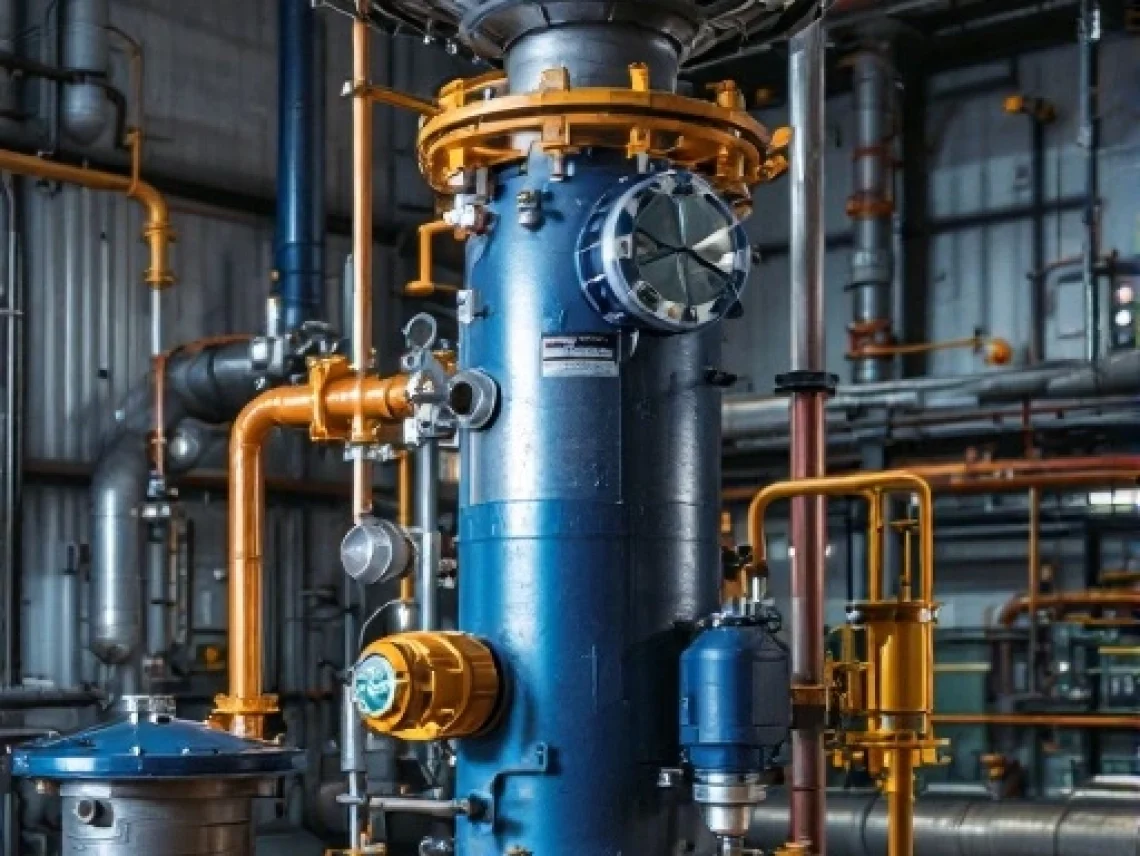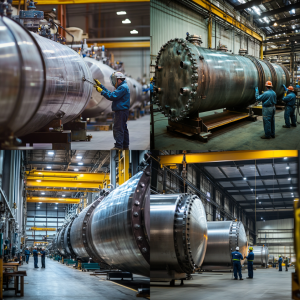
Pressure vessels are critical components in a wide range of industries—energy, chemical processing, oil and gas, manufacturing, and more. Because they store and transport pressurized gases and liquids, the consequences of design or fabrication failure can be catastrophic. That’s why global standards are so essential.
This is where ISO standards come in.
ISO, short for the International Organization for Standardization, is a globally recognized body that develops and publishes standards to ensure quality, safety, efficiency, and interoperability. Based in Geneva, Switzerland, ISO has published over 25,000 international standards, many of which apply directly to industrial applications like pressure vessels.
ISO standards serve as a common language across countries and industries, helping ensure that equipment meets certain performance and safety expectations, no matter where it is manufactured or used. For pressure vessels, ISO creates guidelines that enhance reliability and mitigate risk.
In essence, these standards help manufacturers build vessels that perform safely under high pressure, survive harsh conditions, and comply with local and international codes.

Among the various ISO documents that affect pressure equipment, the most prominent one is ISO 16528.
ISO 16528 is officially titled Boilers and Pressure Vessels. It provides a framework for evaluating the design, fabrication, inspection, and certification of pressure vessels to ensure they are safe and fit for service.
ISO 16528 consists of two parts:
These documents don’t prescribe specific design rules or manufacturing steps. Instead, they lay out performance-based requirements that allow pressure vessel codes from different countries to demonstrate equivalency. In other words, it helps unify international expectations without forcing one-size-fits-all rules.
The goal of ISO 16528 is to enable pressure vessels manufactured under various national standards (such as ASME in the U.S., EN standards in Europe, or JIS in Japan) to be considered equivalent, provided they meet the same performance benchmarks.
For more technical details, you can view the ISO 16528-1:2007 listing on the ISO website.
In addition to ISO 16528, other ISO standards are often used in pressure vessel manufacturing:
The role of ISO standards goes beyond ticking boxes for regulatory compliance. They are instrumental in engineering excellence, risk management, and market competitiveness.
Pressure vessels operate under dangerous conditions. A failure can cause injury, environmental damage, and financial loss. ISO 16528 sets out detailed safety expectations, covering design margins, testing procedures, materials, and documentation.
Adhering to ISO ensures that vessels:
They are resistant to corrosion, erosion, and temperature extremes
ISO provides a baseline of quality across different projects, teams, and locations. Whether a vessel is fabricated in North America or Southeast Asia, ISO alignment ensures everyone follows the same safety logic.
This consistency:
Boosts confidence in outsourced components
When vessels meet ISO-recognized criteria, they are easier to import, export, or certify across borders. This simplifies:
For multinational companies or EPC firms, ISO conformance can reduce red tape and speed up project timelines.
Clients often seek suppliers with ISO-aligned processes. It signals that a manufacturer is disciplined, transparent, and committed to long-term reliability.
At Red River, we don’t just meet code—we live by it. While we build vessels under ASME and other regional codes, we embrace ISO standards as part of our everyday philosophy: “Do it right. Every time.”
This is a key point of confusion for many professionals.
ISO compliance means an organization follows the principles of the ISO standard. It may not be formally audited or certified by a third party, but the company has aligned its practices accordingly.
ISO certification involves a formal audit by an accredited third-party body, which reviews policies, procedures, documentation, and outcomes. If the company passes, it receives an official certificate.
It depends on:
At Red River, we often support clients who require both. Whether you need ASME-compliant vessels, ISO-aligned documentation, or a hybrid approach, we build to meet your needs, without cutting corners.
Pressure vessels serve high-risk, high-reliability industries. That’s why using global standards like ISO 16528 isn’t just good practice—it’s good engineering.
While regional codes like ASME or PED dictate specific design rules, ISO sets the performance criteria that allow different standards to be compared and harmonized. It’s the bridge between national regulations and global operations.
In a world where safety, quality, and efficiency are non-negotiable, ISO standards help manufacturers and clients speak the same language, no matter where they’re located.
The main ISO standard is ISO 16528, titled Boilers and Pressure Vessels. It provides performance-based requirements for design and fabrication.
No. ISO 16528 is designed to complement national codes, not replace them. It enables equivalence between standards like ASME, PED, or JIS.
Not always. Certification depends on regulatory mandates, customer contracts, or internal policies. However, ISO compliance is often recommended.
ISO-compliant vessels:
Inspire customer confidence
Yes. Many pressure vessels meet both ASME design rules and ISO performance benchmarks. This is common in international projects.
ISO itself does not enforce compliance. However, clients, regulators, or insurers may require audits or certification to ensure alignment.
ISO 9001 governs an organization’s quality management system (QMS). While it’s not specific to pressure vessels, it ensures consistent documentation, traceability, and process control—key aspects of vessel fabrication
Most ISO standards, including ISO 16528, are reviewed every five years to stay current with technology, materials, and industry needs.
In the realm of industrial solutions, Red River emerges as a pioneer, offering a diverse range of custom-engineered products and facilities. Among our specialties is the design and production of Custom/OEM Pressure Vessels, meticulously crafted to meet individual client requirements, ensuring performance under various pressure conditions. Our expertise extends to the domain of prefabrication, where Red River leads with distinction.
The company excels in creating prefabricated facilities, modules, and packages, reinforcing its stance as a forerunner in innovation and quality. This proficiency is further mirrored in their Modular Skids offering, where they provide an array of Modular Fabricated Skid Packages and Packaged equipment. Each piece is tailored to client specifications, underlining their commitment to delivering precision and excellence in every project they undertake.